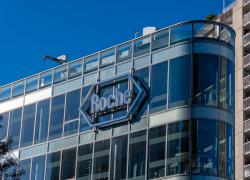
Boundless and others head for phase 1
First-in-human study initiations include Boundless Bio’s second asset, and an ADC from Tubulis.
First-in-human study initiations include Boundless Bio’s second asset, and an ADC from Tubulis.

Boundless Bio, the biotech hoping soon to go public, has taken its second pipeline asset into the clinic. Its lead focus is CHK1 inhibition, but the asset newly into phase 1 is the RNR inhibitor BBI-825 – a mechanism of action that appears to have no industry competition.
Its solid tumour study, which began last month, appears among the latest first-in-human initiations, according to recently unveiled clinicaltrials.gov listings. These also include a multiple myeloma Car-T project in development by a biotech more famous for autoimmune disease cell therapy, and an ADC from Tubulis, a German group that yesterday closed a €128m private financing.
Tubulis has two lead ADCs, but TUB-040, which targets NaPi2b, is the first that appears headed for the clinic. Its Napistar1-01 study, in ovarian and lung cancers, is due to begin in May – presumably once the proceeds of the €128m series B round, co-led by EQT Life Sciences and Nextech Invest, have been safely banked.
TUB-040 uses a cleavable linker, has a drug-to-MAb ratio of eight, and uses a topoisomerase 1 inhibitor payload, a currently popular strategy. Meanwhile, NaPi2b is a fairly rare target to go after, and Mersana’s discontinuation of upifitamab rilsodotin and XMT-1592 left Zymeworks and ADC Therapeutics among the few other active players.
Meanwhile, in RNR inhibition the only competitor to Boundless’s BBI-825 is an academic study run by the NCI/City of Hope, according to OncologyPipeline.
mRNA Car-T therapy
In cell therapy Cartesian Therapeutics has pursued the concept, recently gaining much traction, of targeting not cancer but autoimmune disease. However, its latest clinical effort will feature Descartes-15, an autologous anti-BCMA Car generated by mRNA and not requiring lymphodepletion, in multiple myeloma.
Also in vogue, judging by the number of recent deals struck, is radioligand therapy, and Radiopharm Theranostics’ RAD204 combines the radioactive isotope lutetium-177 with a camelid-derived nanobody that targets PD-L1. Radiopharm, a listed Australian company, gained this asset through the acquisition of NanoMab, and is developing it in collaboration with Lantheus.
The trial, being carried out in Australia, will enrol PD-L1-positive NSCLC patients; in 2022 Radiopharm said this would begin “shortly”, but it is only now getting under way. OncologyPipeline reveals no other radiotherapeutics targeting PD-(L)1 in clinical development.
Finally, the anti-CCR8 MAb HC006 is being taken into a phase 1 solid tumour study by HC Biopharma. This should be of interest to Coherus, which was developing an in-house CCR8 inhibitor before paying $65m in stock to acquire Surface Oncology, which brought with it the anti-CCR8 MAb SRF114.
Coherus’s idea is to combine SRF114 with its recently approved anti-PD-1 MAb Loqtorzi. However, the trial of HC006 tests monotherapy only.
Recently disclosed first-in-human studies*
| Project | Mechanism | Company | Trial | Scheduled start |
|---|---|---|---|---|
| HC006 | Anti-CCR8 MAb | HC Biopharma | Solid tumours | 27 Feb 2024 |
| BBI-825 | RNR inhibitor | Boundless Bio | Solid tumours | 29 Feb 2024 |
| PAS-004 | MEK 1/2 inhibitor | Pasithea Therapeutics | Solid tumours | 29 Feb 2024 |
| Descartes-15 | BCMA mRNA Car-T | Cartesian Therapeutics | r/r multiple myeloma | 1 Mar 2024 |
| IPN01194 | ERK1/2 inhibitor | Ipsen | Solid tumours | 14 Mar 2024 |
| INI-4001 | TLR7/8 agonist | Inimmune | Solid tumours | 29 Mar 2024 |
| RAD204/ NM-01 | Lutetium-177 labelled anti-PD-L1 nanobody | Radiopharm/ Lantheus | PD-L1+ve NSCLC | Mar 2024 |
| SCTB14 | Anti-PD-1 x VEGF MAb | Sinocelltech | Solid tumours | 30 Apr 2024 |
| SRG-514 | Undisclosed | Surge Therapeutics | Adjuvant breast cancer | Apr 2024 |
| TUB-040 | Anti-NaPi2b ADC | Tubulis | Napistar1-01, ovarian & adeno NSCLC | May 2024 |
Note: *projects newly listed on the clinicaltrials.gov database between 8 and 12 Mar 2024.
1069













